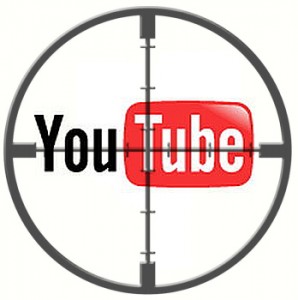How & Why Madison Avenue Is Killing YouTube (and what it can do)
Call it a subtle scent at this week’s Ad:Tech in NYC… Lots of discussion of online-video, even if not in proportion to online-video’s growing importance to the online-marketing mix. More interesting, however, is that most conversations didn’t use the two words: “you” and “tube.” People talked about contextual targeting, video-advertising networks, and even facial recognition.
Even though every attendee received a free Fast Company that featured YouTube influencers, the words “You” and “Tube” weren’t muttered except in disgust. Even Google’s mainstream booth didn’t showcase YouTube. WTF?
Why? How was it that people would only discuss YouTube when I brought it up? And why was all the feedback negative:
 They’re not selling inventory well. They’re not even making it easy for us to buy it.
They’re not selling inventory well. They’re not even making it easy for us to buy it.- They don’t understand the role of the agency because they’re used to getting money through electronic bids.
- YouTube sees agencies as unimportant middlemen between them and THEIR customers
- If you don’t have $40 million, they won’t customize things for you.
The “Madison YouTube Snub” wasn’t about the proximity of ads to “consumer generated content,” or about metrics or targeting. It was simply that agency buyers (as haughty as I know they can be) aren’t being treated well.
What YouTube is missing is the “Great Irrationality of Marketing Spending,” something I’ve grown to understand even if I disdain. I’ve seen it closely from all three perspectives: as a content creator, a buyer, and an intermediary. While we direct-response oriented marketers (the ones who track A/B campaigns on Google OCD style) are about results, the vast majority of advertising spending is not rational or performance driven. There. I said it. Try to refute that fact.
I’m not suggesting that media buyers are behaving recklessly or spending without consideration of their client’s money. But I do know that when confronted with a new medium with unclear metrics, they buy based on a) what’s easy, b) what they understand, and c) relationships.
I know how devalued my 4-6 million monthly views on YouTube are, and how the cost-per-view is horrifically low. So this article is a bit biased. But I also know I can’t solve that myself… it’s going to take some improvements in San Bruno. I would typically provide this advise without public fanfare as “not to bite the hand that feeds me.” I wouldn’t have an audience without YouTube. But I owe it to myself and fellow creators to help YouTube solve its biggest problem: poor monetization of traffic.
So here are 7 tips for YouTube to win back the hearts and dollars of Madison Avenue.
 Be Nice. You don’t have to contort your business model to fit advertisers, but at least show them love.
Be Nice. You don’t have to contort your business model to fit advertisers, but at least show them love.- Know Your Customer. It’s only partially true that the big brands are your customer, Google. Don’t negate the influence of the agencies on how that spending is partitioned. Even the smartest and well-intentioned marketers defer to media buyers. Marketer have two years to chase ROI and can’t possibly get into the weeds of one medium — much less one property.
- Teach Google sales people about YouTube. They simply don’t understand how to sell display advertising, much less video. It’s really quite sad.
- Educate. As market leader, it’s Google’s responsibility to set metrics, validate the medium, and educate buyers AND key influencers. Don’t expect logic to prevail, or it will be 2012 and Madison will have jacked up competitors. If I don’t see some ROI studies in 2011 published by YouTube and Forrester, ComScore, TubeMogul, Jupiter, eMarketer, or whoever… I’m going to show up to San Bruno with poop on a stick.
- Create an East Coast sales office for YouTube. Do it now. YouTube is floundering in silly pods, and there’s not enough pretty faces greasing agency palms. I resent it too, but it’s how dollars flow.
- Decentralize. Agencies do a lot of stupid things, but they know the importance of small. Google is too layered to move in the agile way that’s required of new media, and it’s killing itself.
- Get Creative. You don’t need to accept ad units that piss of your viewers, which is a more important stakeholder than advertisers. But explore new options, partner with greater trust, and don’t expect video to be monetized with the simple standards of your cash cow (paid search).
Any other tips? Or are you just gonna hope it takes care of itself?


Wow. Blog post of the year, Kevin. I learned a lot here. Thanks!
The King has spoken.
Hey Nalts,
I don’t understand half the “lingo” you are talking about, but your “to do” list for Youtube is spot on. I’m not a big time youtuber by any means, but my biggest problem with youtube is communication with them. I’m sure bigger youtubers get better treatment with affairs; however to get quality businesses to be more apart of Youtube, can only make youtube a better place. I can be proud of one thing though, I have more Subscribers than our reelected Governor Pat Quinn, ha-ha
Peace, ace77man
The reason Madison Avenue doesn’t talk about YouTube? it’s not TV. It doesn’t fit into their neat little TV buckets. They are afraid of it because they don’t understand it.
YouTube has some great east coast sales folks (I know, I’ve worked with some of them). But in the main, it’s brand new and completely unintelligable to most people who’ve worked in TV or internet advertising. That’s the real problem.
WOAH, how did I miss this one?